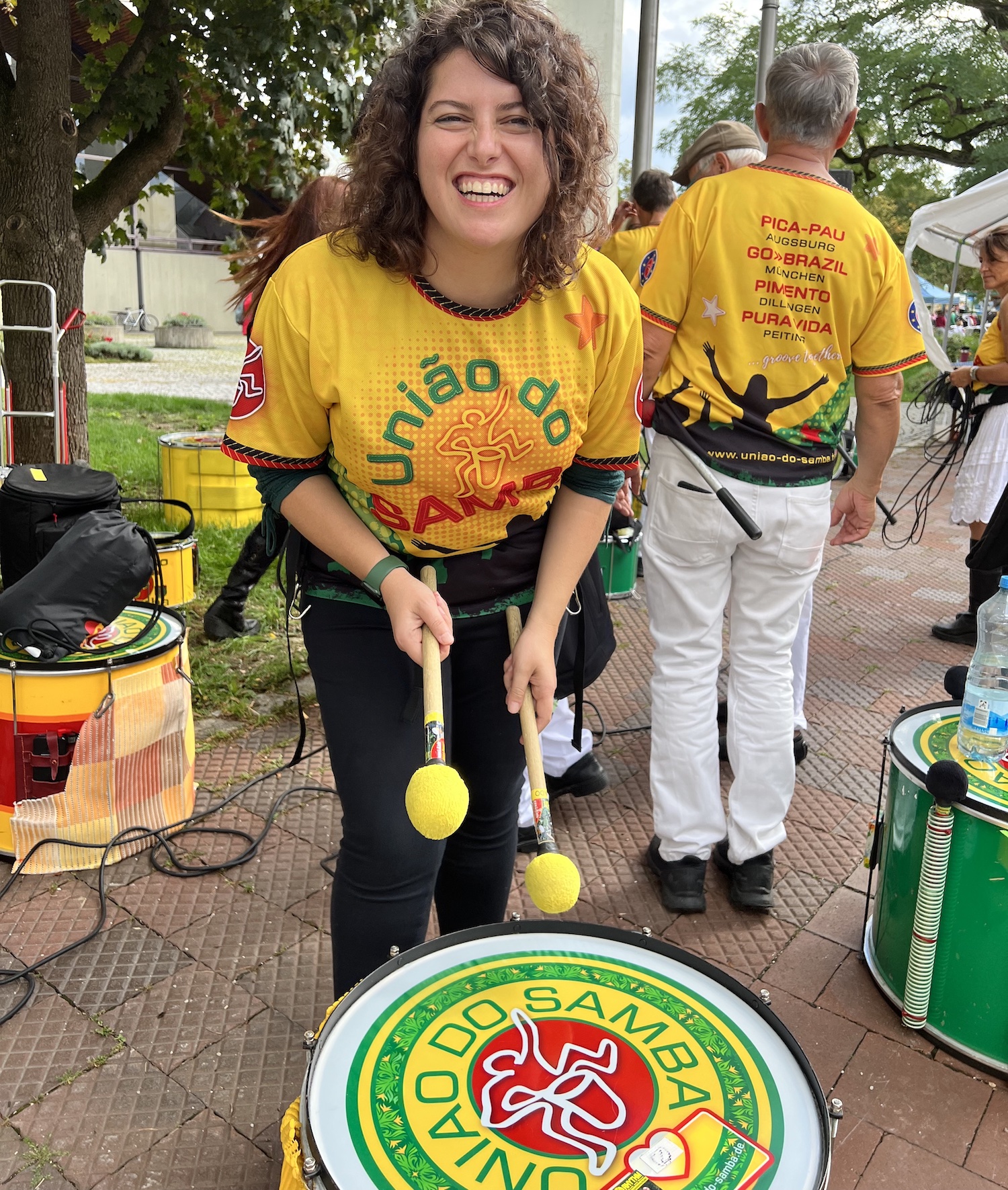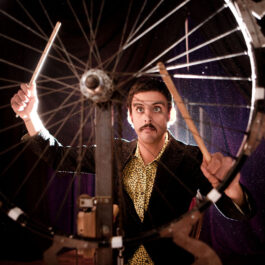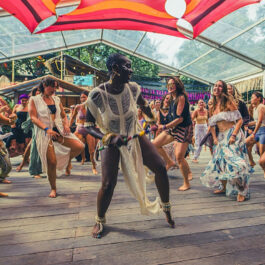How much tolerance do we have for our own mistakes?
I, believe it or not, have very little. The fear of making mistakes often prevents me from doing what I like most: trying new things. That is, in fact, why this column is titled “Challenge Yourself” and not simply “Do It”.
Let’s be honest: nobody likes to make mistakes. At the same time, it’s the only way to learn and improve ourselves – because staying in our comfort zone never leads us anywhere. As hard as it is, failing helps us build resilience, and is therefore key to our self-development.
I chose to try samba drumming as it seemed like the perfect pick-me-up activity to counter the monotony of everyday life. It has it all: excitement, awe and a sort of childlike amusement. But trying it actually taught me a lot about myself, my attitude and my tolerance for mistakes. I would even go as far as to say that samba drumming is the Challenge Yourself activity par excellence.


Getting In The Groove… With Strangers
As soon as I enter the practice room, I immediately notice that I’m in a different environment.
There are about 20 players there, and everyone is kind, welcoming and friendly. It’s unusual, to say the least: I just met these people. Yet their mood is contagious, and I can’t help but mingle. I talk with other beginners who also show clear signs of gleeful anticipation. A player offers me some apple pie, and I learn that there are different styles of samba, such as batucada, maracatu, bossa nova and samba reggae. The latter, the one we will be playing, has become very popular over the last 30 years due to its slower speed compared to complex styles such as batucada, which is played at 130-140 BPM and higher.
Our teacher is Laslão Rivera, the director of Munich-based samba band and school Via-Jante. He recommends I pick up a surdo, a large bass drum, as the best instrument to begin with. I learn that smaller drums like the caixa or the repinique are characterised by a much higher pitch, and therefore have more prominent roles in the band, with the repinique leading the entire bateria (samba ensemble). Other instruments typically used by a bateria include rattles and shakers, bells and several types of hand drums.
We start by moving our feet to get a baseline rhythm for everyone to follow; then it’s time to hit our drums by following a simple beat which is demonstrated to us. We are not required to follow any musical notation; knowing how to read music is not necessary to learn samba drumming.
“You need to memorise the beat, but even more importantly, you need to play it in rhythm with the others, getting into the groove until you feel in sync,” Rivera explains.
“More than any technical prowess, this social component constitutes the very core of samba drumming,” he adds. “In turn, this means that playing samba can elicit intense feelings and experiences in each player, in the band and in the audience.”
A Journey Of Self-Acceptance
Needless to say, the task is not easy. All it takes is for my stroke to be half a second too early or too late to get out of sync, though my feet help me stay in tune with the others. And when I focus too much on timing the drum strokes, I forget the rest of my beat, and get out of sync again. It gets frustrating.
“I advocate for tolerance to mistakes,” says Rivera. “Percussion instruments are loud, therefore errors are noticeable. Yet everyone needs to perceive them on their own and get back into the groove. It’s a journey of self-acceptance.”
I find that to be true. While I am playing, I notice my mistakes and start correcting them, but that only works if I don’t put pressure on myself. I need to accept that I will make them, the important part is to get back on track. That helps me relax, and the feeling of satisfaction I experience when I correct myself is far greater than that of simply getting the beat right (that must be how resilience feels).
In any case, even with my occasional slip, the group sounds phenomenal: I can just read it on everyone’s face. We are dancing, grinning cheerfully and playing together as one, from beginners to experienced members. And to think we only met two hours ago.
“The results speak for themselves: it’s not the performances with my experienced group of long-time players that bring the greatest success, but rather the mixed performances, in which even the less experienced members bring in their small mistakes. The audience immediately recognises itself in their groove: not perfect and therefore boring, but true to life, natural and exciting,” Rivera says.
The Ultimate Test: Playing At A Street Festival
Another samba band offers me a unique opportunity: take a class with them, then join their group in performing at a street festival. That way, I get to experience the interaction with the audience, which is an important component of samba drumming. After much deliberation, and despite my stage fright, I reluctantly accept.
“Notice how, whenever you hear a good beat, you automatically start to move. This feeling is amplified when playing samba drums: one feels the vibrations in their entire body, dances and connects to the music,” says Ulrich Bammer, Director of Uniao do Samba, a samba drumming group and school in Bavaria.
Getting into the rhythm does, in fact, feel wonderful, and my training session with them goes well. But I get out of sync on my surdo a lot – pretty much every time I think about the fact that I will perform.
Finally, the dreaded day arrives, and I am all for backing out. My instrument is loud, people will notice, and this is “Challenge Yourself”, not “torture your audience”. I still go, thinking I will experience the interaction with the audience, you know, from the side of the audience.
My teacher encourages me to at least give it a try: play one set with them, and see how I feel. And as Uniao do Samba sets up their giant papier mâché puppet, Luana, I decide to go for it. In a few minutes, I am wearing their colours, the surdo tied to my hips, and off I go.
As we line up to perform, I hope nobody sees me. But then we start playing, and it’s exhilarating. Within seconds, a large group of people amasses in front of us, completely in awe, from small kids to older people. I get what my teacher wanted me to experience: just seeing the happiness on people’s faces feels extremely fulfilling. More than just a fun activity, transmitting that kind of joy is an act of love towards our audience, and that feels like the ultimate reward. As we finish playing and an elderly gentleman makes his way through the crowd to get a picture with Luana, people are lining up to ask us how to join.
On my way back home, I can’t help but rhythmically tap my hand on my leg, a smile on my face. Despite never particularly liking the music before, samba has gained a special place in my heart. Rivera said it best: “By playing samba, I can tear my fellow players and our listeners away from their monotonous day-to-day, and really touch their hearts.”
[Photo at top: Roosewelt Pinheiro/ABr via Wikimedia Commons]














Sorry, the comment form is closed at this time.